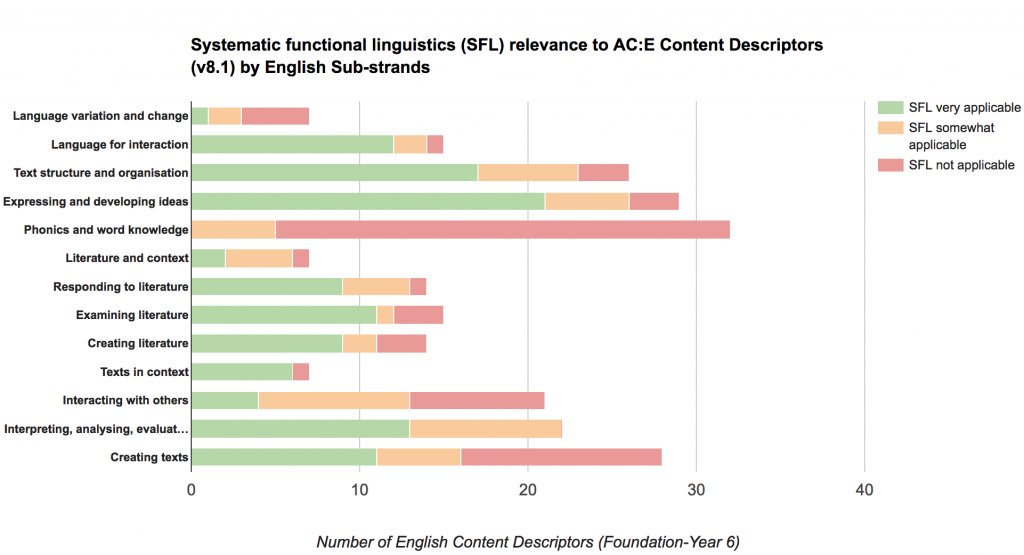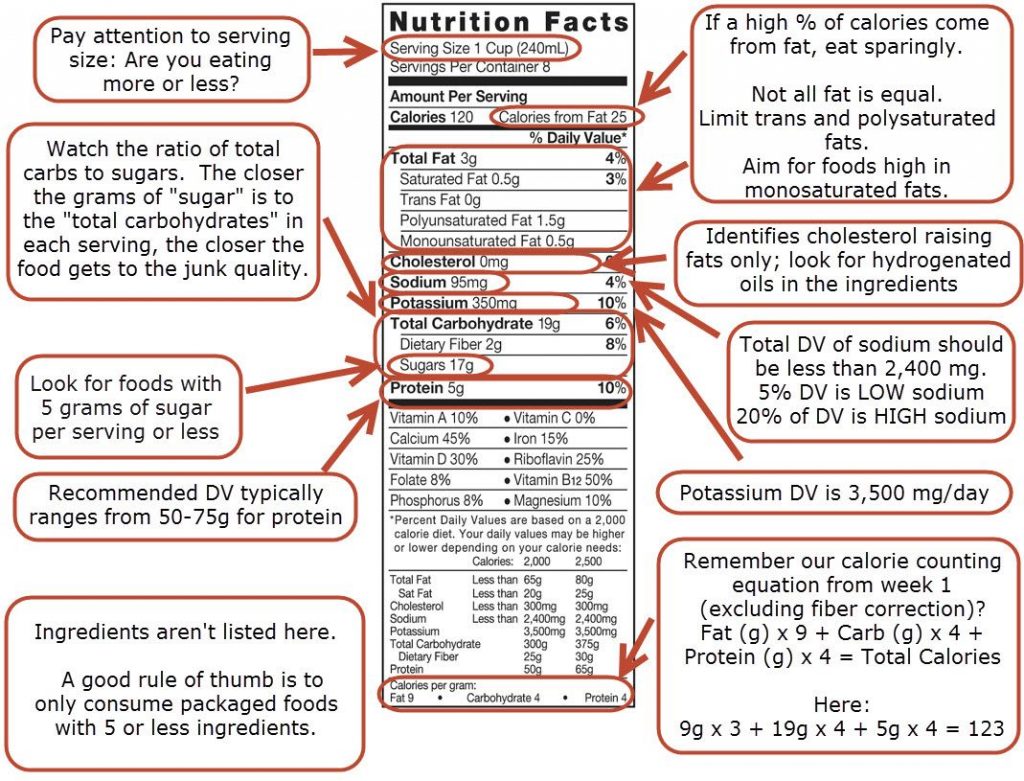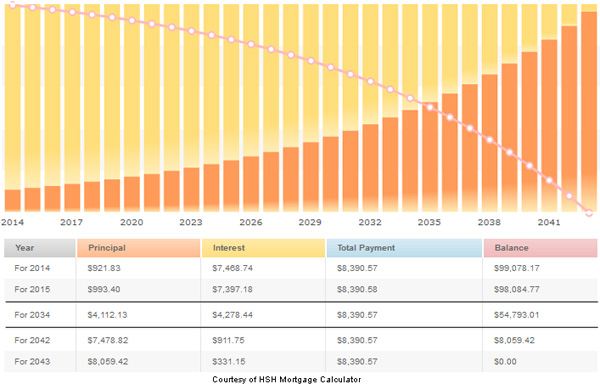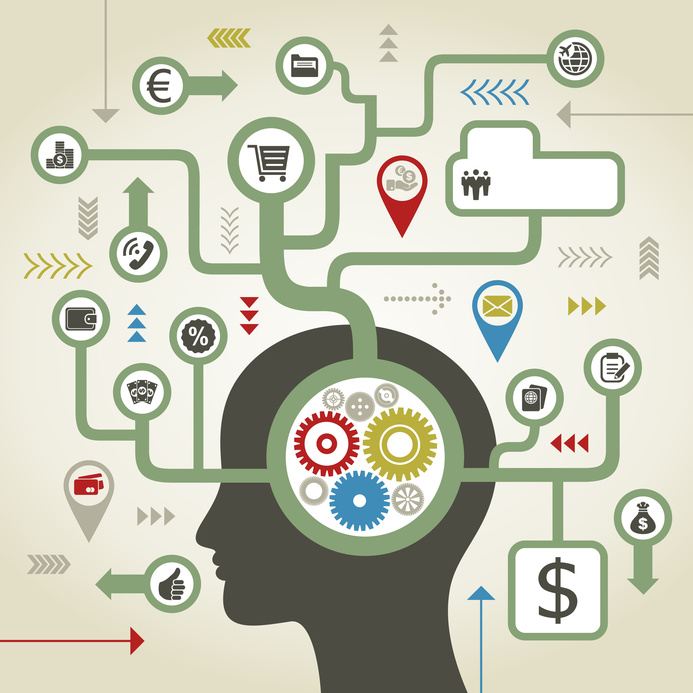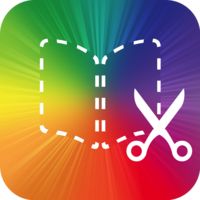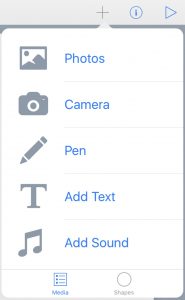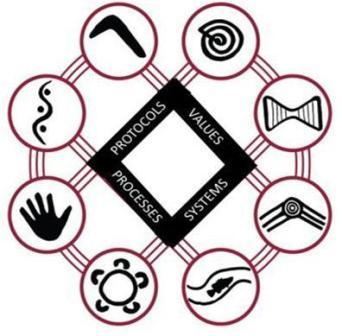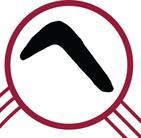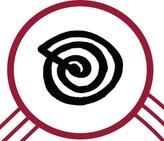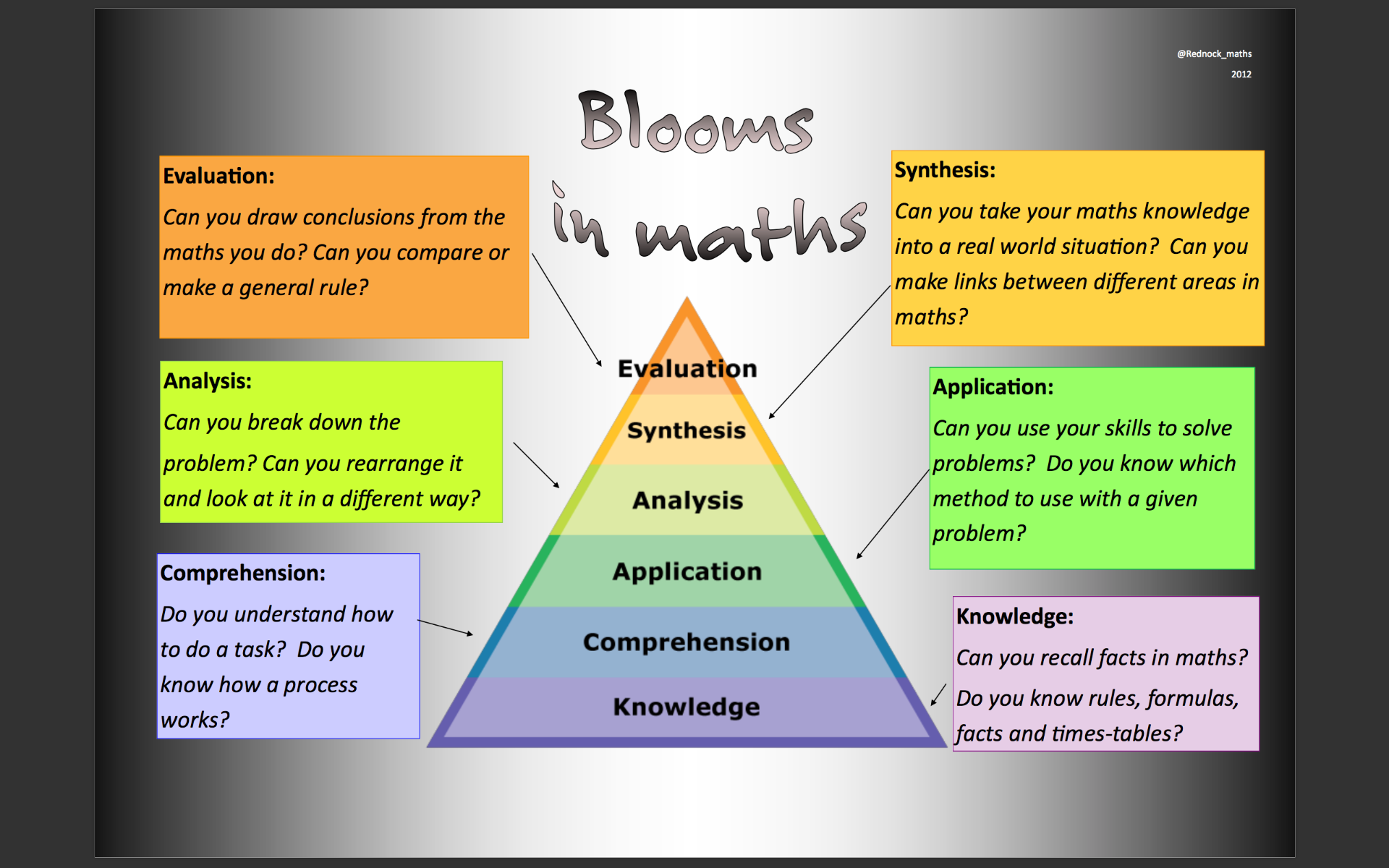According to the Melbourne Declaration on Educational Goals for Young Australians, one key goal of school education is to enable young learners to manage their emotional, mental, spiritual and physical wellbeing (Barr et al., 2008). The Australian Curriculum, Assessment and Reporting Authority (ACARA) addresses this goal in the focus area ‘Mental health and wellbeing’ of the new Health and Physical Education (AC:HPE) syllabus (ACARA, 2017a), as well as in the general capabilities ‘personal and social capability’, which supports students in “. . . recognising and regulating emotions, [and] developing empathy for others” (ACARA, 2017b), and ‘ethical understanding’ through fostering “. . . attributes such as honesty, resilience, empathy . . .” (ACARA, 2017c).
An increasing body of international research highlights the role mindfulness practices can play in supporting mental health across all age groups in school settings. Mindfulness is also discussed to increase students’ socio-emotional wellbeing, behaviour and academic performance. However, when it comes to the implementation of mindfulness practices in the classroom, not all approaches are equally suitable and effective. Teachers are faced with the task to select and implement the components of mindfulness intervention programs that are most responsive to their specific school community, year level and classroom (Gould, Dariotis, Greenberg, & Mendelson, 2016). This post provides new insights into which mindfulness approaches work best in an Australian Year 5 classroom. It is based on student responses throughout a four-week mindfulness program that investigated students’ experiences of and perceptions towards sensory awareness practices, movement awareness practices, and attention and emotion regulation practices. The mindfulness practices conducted for this research directly benefited all participating students and the outcomes can inform implementations of mindfulness programs in upper primary schools across Australia.
Literature review
Over the past decade, mindfulness has developed into a buzzword closely associated with mental and emotional health interventions, as demonstrated in the tenfold increase in related internet search queries, with disproportionately high numbers from Australia (Google Inc., 2017). An identical trend is recorded by the research platform The Web of Science® (Thomson Reuters, 2017), with 20% (>1,500) of academic papers investigating the benefits of mindfulness published in 2016 alone.
Back in 2004, a panel of clinical psychologists agreed on a widely-cited operational definition of mindfulness:
mindfulness guides and sustains awareness of the present moment, the thoughts, feelings, and sensations that arise, through self-regulation of attention on the immediate experience through a mental orientation of curiosity, openness, and acceptance (Bishop et al., 2004).
Two schools of mindfulness interventions dominate the research landscape (Ivtzan & Hart, 2016). The first is led by Jon Kabat-Zinn from the University of Massachusetts, who developed mindfulness programs drawing on ancient Buddhist meditative practices (e.g. Kabat-Zinn, 2004). The second is led by Ellen Jane Langer from Harvard University, who developed a “psychology of possibility” that questions preconceived mindsets and encourages acting on new observations (Langer & Moldoveanu, 2000). For this research report, twelve formal mindfulness practices mostly aligned with the first approach were curated, developed and delivered in separate lessons (Appendix A).
Despite the methodological shortcomings of individual studies, mindfulness can now be considered a scientifically-proven method for improving psychological aspects of wellbeing and executive functioning (Gu, Strauss, Bond, & Cavanagh, 2015). For example, research into neuroplasticity based on electroencephalographic measurements of the brain activity of experienced meditators, established that sustained mindful awareness can improve the depth of information processing and the speed of attention allocation (Van Leeuwen, Singer, & Melloni, 2012). In another seminal work, based on correlational, quasi-experimental and laboratory studies, mindfulness is shown to improve psychological wellbeing by reducing negative emotions such as anxiety, hostility and depression, while enhancing positive affectivity, including self-awareness, self-regulation, and emotional intelligence (Brown & Ryan, 2003).
In the school context, the potential of mindfulness-based interventions has recently been established in a systematic literature review and statistical meta-analysis to improve students’ cognitive performance, emotional wellbeing, and behavioural self-regulation (Zenner, Herrnleben-Kurz, & Walach, 2014). Applied to primary schools settings, mindfulness is still an emergent field of research, with a growing number of case studies suggesting similar benefits (e.g. Arthurson, 2015; Flook et al., 2010). The most comprehensive independent study so far is based on an eight-week mindfulness program delivered in five primary schools in New Zealand (Rix & Bernay, 2015). The results corroborate the positive findings for enhancing psychological wellbeing and executive functioning previously established for adolescents and adults. In Australia, a pilot mindfulness-based teaching program conducted in Year 7 reported similar results and further highlighted the high approval rates by participating students (Arthurson, 2015).
These promising research outcomes inspire an increasing number of mindfulness-based educational programs advocating for a ‘mindfulness curriculum’ in Australia. Smiling Mind (2016) is a prominent example of a not-for-profit organisation promoted by KidsMatter (2013), an Australian mental health and wellbeing initiative set in primary schools. The program is codeveloped by Australian psychologists with knowledge of developmental stages, and its modules are aligned with the AC:HPE bands. A critical review of existing mindfulness programs for schools however highlights the wide range of different mindfulness approaches offered in each age-based module (e.g. Meditation Capsules, n.d.; Smiling Mind, 2016). So far, little evaluation has been conducted into the different types of mindfulness activities that are most responsive to particular age groups (Burke, 2010). There is still a gap in our understanding of how effective and engaging particular mindfulness approaches and activities are in different year levels (Arthurson, 2015).
This study aims at narrowing this gap through participatory research into age-appropriate and responsive mindfulness practices in a Year 5 class. The researcher, a pre-service teacher and Yoga Australia- accredited yoga and meditation teacher, introduced a wide range of mindfulness activities following a strength-based progression recommended by child and adolescent psychologist Karen Hooker and school psychologist Iris Fodor (Hooker & Fodor, 2008). The sequenced introduction of mindfulness activities facilitated a systematic inquiry into which types of mindfulness practices Year 5 students consider most beneficial and engaging.
Research questions
Australia’s diverse and inclusive classrooms mandate teaching and learning approaches that are responsive to individual learners’ needs and their social and cultural backgrounds (AITSL, 2014, APST 1). The design and implementation of an Australian ‘mindfulness curriculum’ therefore requires that informed choices are made on the range and type of mindfulness practices taught. At present, there is a lack of published research from Australia or elsewhere on what mindfulness practices work best with primary school students. No information is available on how an Australian Year 5 student cohort experiences mindfulness practices that focus on sensory awareness, movement awareness, and attention and emotion regulation. Besides, little information is available on how effective these methodologically distinct practices are in promoting socio-emotional wellbeing and academic learning in a primary school setting. In order to answer which mindful practices work best in an Australian Year 5 classroom, more information is required on which mindfulness experiences are considered most effective and enjoyable by participating students.
Consequently, three research questions were asked:
- How effective are particular mindfulness practices in terms of improving the socio-emotional wellbeing of a Year 5 student cohort?
- How effective are particular mindfulness practices in terms of improving the executive functioning of a Year 5 student cohort?
- Which mindfulness practices are the most and least popular with a Year 5 student cohort, and why?
Methodology
The research was carried out over the course of four weeks (15th May – 2nd June, 2017) in a large (Australian Government, 2016) Brisbane metropolitan Primary State School with a ranking on the Index of Community Socio-Educational Advantage (ICSEA) slightly above national average (ACARA, 2017d). The mindfulness program was designed to address the five key propositions informing the AC:HPE (ACARA, 2017a), namely:
- educative purpose
- health literacy
- strengths-based approach
- valuing movement
- and critical inquiry
The program was divided into four thematic modules that sequentially introduce a wide range of mindfulness practices (Hooker & Fodor, 2008):
- Module 1: health literacy education on mindfulness and related neurobiological concepts
- Module 2: sensory awareness practices
- Module 3: movement awareness practices
- Module 4: attention and emotion regulation practices
Individual mindfulness activities were selected for educational value, variety and in-depth exploration to cater for student diversity and promote practical skill development (Kaiser Greenland, 2016; Thompson & Gauntlett-Gilbert, 2008) (Appendix A). Adhering to the school policy and the Queensland school legislation (Queensland Government, 2006, chapter 5), the teaching researcher selected only mindfulness practices that were strictly secular and used instructional language that refrained from any terminology or sounds (e.g. ‘Om’) that could be considered religious or culturally sensitive in the Australian school context.
The exploratory case study was carried out as action research with the objective to generate data applicable to the specific classroom. In education, action research typically involves small-scale systematic inquiries conducted by teachers with the aim to improve aspects of their teaching and learning practice (Milton-Brkich, Shumbera, & Beran, 2010). The unit of analysis was a mixed Year 5 class of twenty-eight students from various backgrounds. Mindfulness practices were taught after break time for approximately fifteen minutes three times a week.
Action research is cyclical and participatory in nature, where action is planned, observed, discussed, reflected and revised for subsequent rounds (Milton-Brkich et al., 2010). The students were invited to participate in all aspects of data generation, evaluation and reflection. Towards the end of the school day, participating students completed a questionnaire. They ticked and submitted anonymous exit slips with three times three emoticons to indicate what best expressed their current emotional and mental states, and their level of enjoyment of the mindfulness practice (Appendix B). The questionnaire is an adaption of the Smiling Mind “How do you feel?”-question (Smiling Mind, 2017). The use of emoticons to express feelings and emotions has previously been evaluated as a safe and fun way by most participants in a workplace environment (Huang, Yen, & Zhang, 2008), and was proposed as a suitable self-report measurement for young children (Allen, et al., 2017). Questionnaire participation was optional, anonymous, and exit slips were folded and collected in a closed box for additional privacy.
The daily activity-specific questionnaires were complemented by a single qualitative twenty-minute group discussion at the end of the program. The discussion took place in the format of a dialogue circle to promote cogenerative whole-class dialogue in a safe and inclusive environment (Queensland Studies Authority, 2010). More specifically, the ‘Curriculum into the Classroom’ (C2C) Education Queensland yarning circle protocol (Department of Education and Training, 2017) was followed to address the qualitative research questions in a semi-structured discussion with all case study participants in an environment of openness, respect and equitable participation (Roth, Robin, & Zimmermann, 2002). The teaching researcher sequentially introduced stimulus questions and took written (de-identified) notes of students’ answers on why they considered particular mindfulness practices most or least helpful and engaging (see Appendix C). This critical inquiry approach is in alignment with the final AC:HPE syllabus key propositions (ACARA, 2017a). The qualitative data helped to explain trends in the quantitative data, thereby limiting potential bias and subjectivity in the interpretations of the participating researcher (Snoeren, Niessen, & Abma, 2012).
Data analysis
Throughout the twelve rounds of mindfulness activities, all the students took the opportunity to provide feedback on their emotional and mental wellbeing and engagement with the activity using the exit slips (Appendix C). Valid exit slips were counted and analysed each day, tallying up student responses in each of the nine fields. The total number of responses varied between twenty-four and twenty-eight. The data resulted in daily absolute frequency distributions of socio-emotional states (‘happy’; ‘okay’; ‘sad or angry’), mental states (‘clear and alert’; ‘okay’; ‘stressed and confused’), and student engagement with the activity (‘liked activity’, ‘okay’, ‘disliked activity’). In order to compare responses between different mindfulness activities, the data had to be normalised by scaling individual data sets to 100% (Lambert, 2012).
The exit slip responses to individual activities (Table 1) indicate that the student cohort socio-emotionally felt best after practicing postural yoga (‘asana postures’). The lowest levels of emotional wellbeing were recorded after exploring the visual sense in a ‘human camera’ activity that involved being guided with closed eyes by a friend to three “sights” in the classroom. Postural yoga practice also resulted in the highest levels of mental clarity, a 40% increase when compared to an activity that took inventory of student mental presence at the beginning of the unit using Mindfulness jars (‘awareness meters’). The student cohort also liked postural yoga practice more than any other activity. In contrast, the least liked activities were formal breathing exercises (‘pranayama breathing’), with only half the cohort enjoying this activity. The ‘human camera’ activity also stood out for dividing student opinions, combining both high approval ratings with a high percentage of explicit dislikes. This is also reflected in the raised stress levels that nearly one third of the students reported at the end of the day. The ‘pass the cup’ activity was interrupted by a fire drill and therefore had to be excluded from comparative analysis (last line in Table 1). This example can serve as an indicator for gauging the overall sensitivity in student responses, with only half of the participants reporting feeling happy, clear and alert, and engaged.
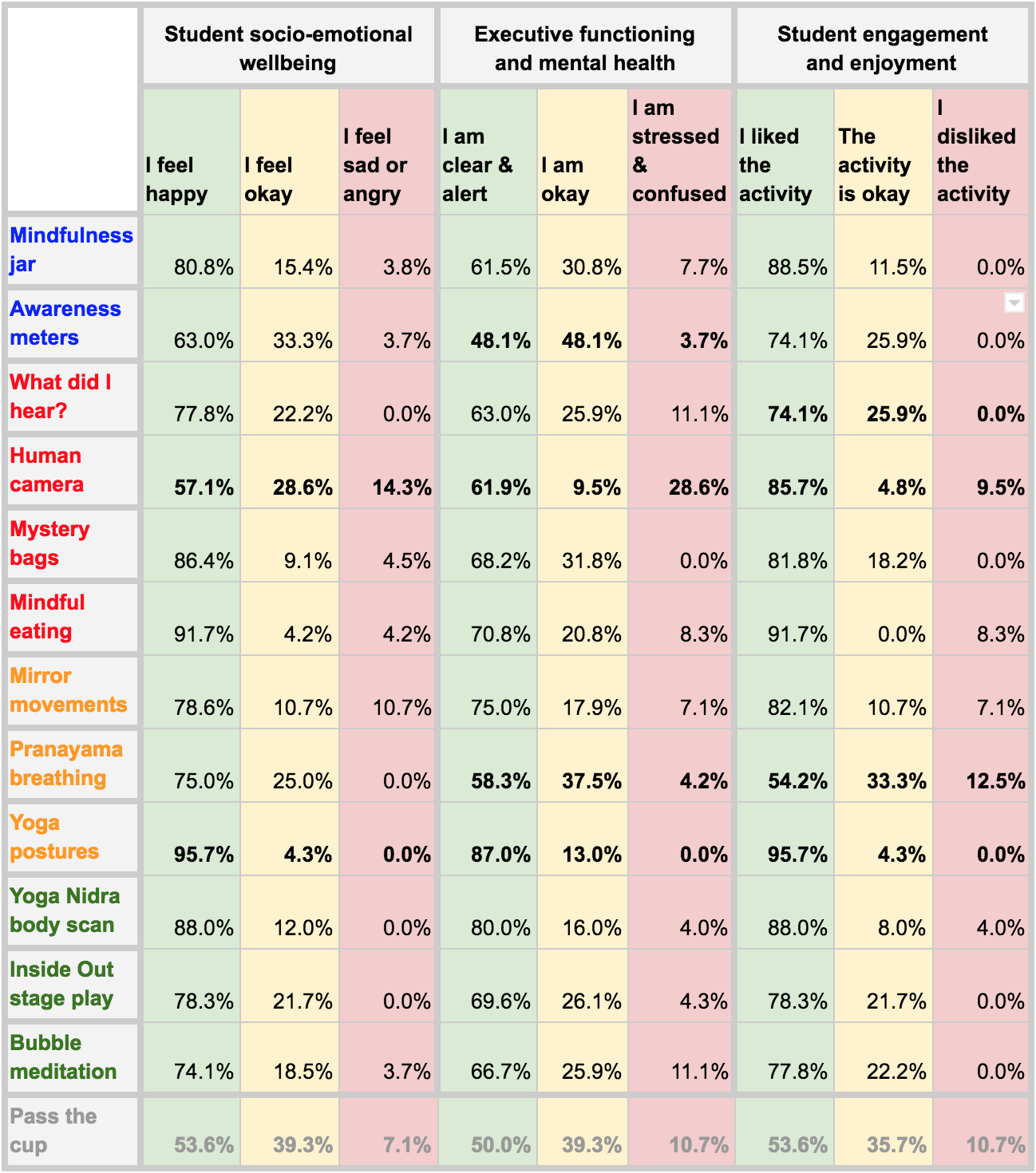
Table 1. Student responses to individual mindful activities on exit slips. The responses are normalised as percentage points for each activity and grouped into the three domains of student socio-emotional wellbeing, student executive functioning and mental health, and student engagement and enjoyment. Individual activities are colour-coded into four categories relating to health literacy (blue), sensory awareness (red), movement awareness (yellow), and attention and emotion regulation (green). The activity that was interrupted by a fire drill is listed in grey. Data discussed in the text above are emphasised in bold letters.
The participant responses to individual activities can be aggregated into corresponding thematic modules. The total number of responses varies significantly between the four modules. The two health literacy practices combine only fifty-three responses. In contrast, the four sensory awareness practices required to cover tactile, visual, auditory and gustatory/olfactory mindfulness experiences produced a total of ninety-four combined responses (Appendix C). Consequently, participant responses for each of the four modules were added, normalised and expressed as percentages to enable data comparisons. The summary statistics were plotted as a column chart to highlight patterns in the data (Fig.1).
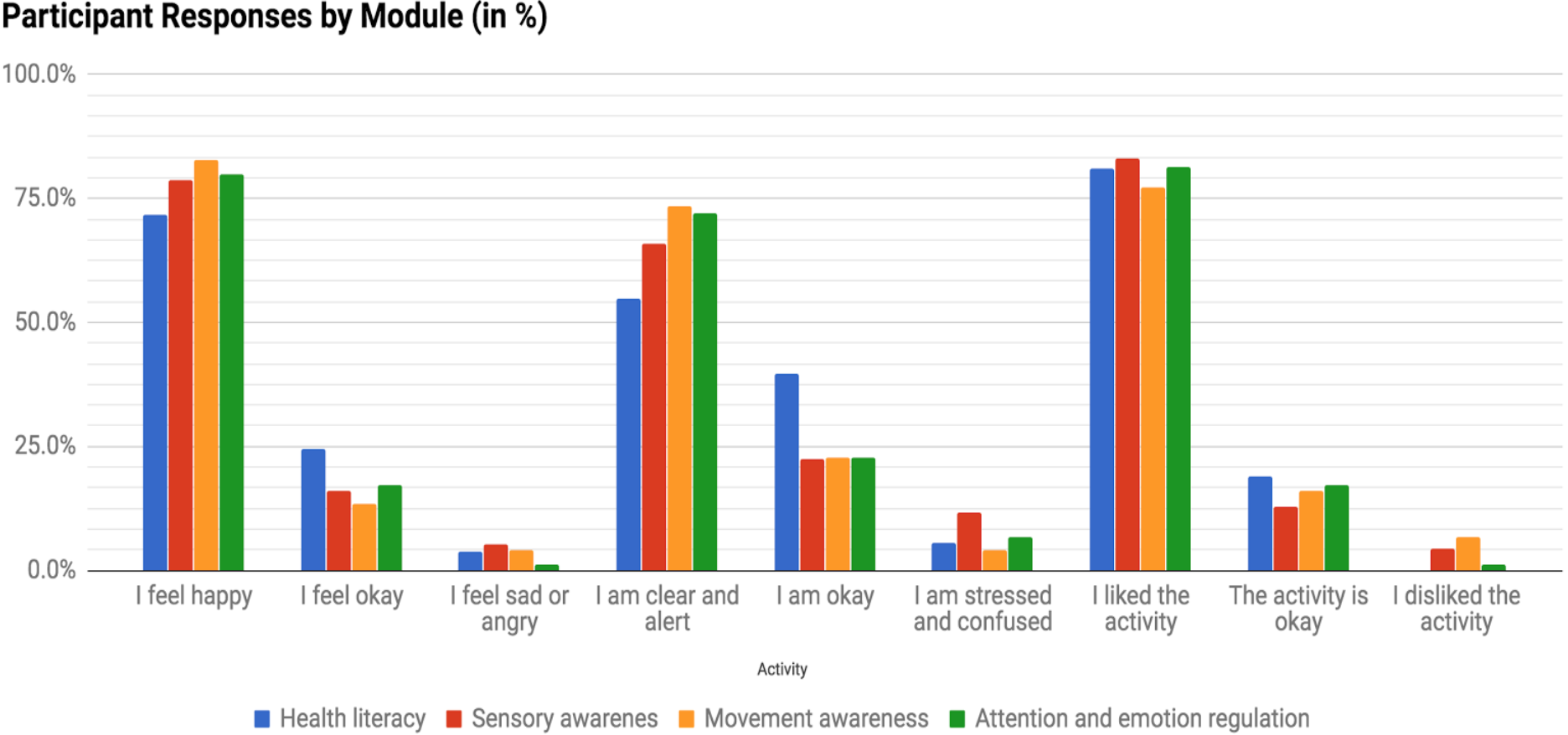
Fig. 1. Exit slip responses summary statistics plotted as a column chart. Participant responses are grouped into four categories relating to health literacy (blue), sensory awareness (red), movement awareness (yellow), and attention and emotion regulation practices (green). Responses across groups are normalised as percentage points to allow for comparison.
Movement awareness practices proved to be most beneficial in regards to students’ socio-emotional (83%) and mental health (73%), closely followed by attention and emotion regulation practices. In stark contrast to these positive outcomes, the movement awareness practices received the least ‘likes’ (77%) and most ‘dislikes’ by the students (7%).
While sensory awareness practices such as ‘mindful eating’ made most participants feel ‘happy’ (79%) and were liked (83%), they exercised a comparably limited positive impact on mental health (66%). Sensory awareness practices also registered the highest percentages in participants feeling ‘sad or angry’ (5%) and/or ‘stressed and confused’ (12%). The differences in percentage points is small and needs to be interpreted with caution, considering the low and variable number of participants. However, it is safe to conclude that a small number of students did not respond well to sensory awareness practices compared to the health literacy educational practices in the first week that serve as a control.
The attention and emotion regulation practices came second best in all categories in terms of participants feeling ‘happy’ (80%), ‘clear and alert’ (72%) and engaged (81%). In contrast to the sensory awareness practices, significantly less students were isolated in negative emotions (1%), stressed (7%) or disengaged (1%).
The cogenerative dialogue at the end of the unit helped to interpret and explain the quantitative data (Appendix D). Students were asked which mindfulness practices they enjoyed most, least, and why, and answered with a range of activities and reasons. For example, the ‘mindful eating’ activity involving a single jelly bean was enjoyed by some students for the intense experiences of smelling, flavour and having to regulate their urges. Others found this temptation annoying and hard to suppress. Similarly, some students enjoyed stretching in postural yoga, while others were uncomfortable and experienced a lack of balance. Likewise, the ‘human camera’ activity was mentioned both in the context of positive experience of trusting other people, and a discomfort resulting from lack of control, balance and sense of direction. When asked to highlight something interesting they learned over the course of the program, the single most disliked mindfulness activity of ‘pranayama breathing’ was surprisingly repeatedly highlighted by the students as a good and practical way to calm down. The mindfulness practices that students wanted to practice more often combine all the aspects found in a traditional yoga program, including postural work (asana), breathing exercises (pranayama), sense withdrawal (‘yoga nidra’) and meditation. Finally, it was remarkable that during the dialogue circle students repeatedly referred to terms that highlight positive socio-emotional skills such as “you can trust other people [ . . . ] not just your friends”, and “calming down can help you a lot instead of just fighting back”.
Discussion of findings and implications
This study supports a growing body of research that reports on the positive effects of mindfulness interventions on socio-emotional wellbeing, executive functioning and mental health (Brown & Ryan, 2003; Gu et al., 2015; Van Leeuwen et al., 2012), including mindfulness programs delivered in school settings (e.g. Zenner et al., 2014). A comparison of participant responses between the control activities at the beginning of the mindfulness program (e.g. ‘mindfulness jars’) and all subsequent modules shows that students’ self-reported socio-emotional wellbeing was raised from ‘okay’ to ‘happy’ by an average of 10%. Corresponding student mental health improvements are even more pronounced, increasing from ‘okay’ to ‘clear and alert’ by nearly 20%. This finding is particular interesting in a school context, where students’ executive functioning play a critical role in their ability to learn (Flook et al., 2010).
In alignment with similar studies (i.e. Arthurson, 2015), students overwhelmingly (77-83%) enjoyed participating in the mindfulness activities and remained fully engaged throughout the four weeks. Unexpectedly, some sensory awareness practices resulted in mixed student experiences. Sensory awareness practices that required either the exertion of self control (i.e. ‘mindful eating’) or the relinquishing of control (i.e. ‘human camera’) were enjoyed by some students but disliked by others, while registering an overall increase in students feeling socio-emotionally or mentally stressed. This observation is at odds with other studies that discuss sensory awareness activities as student favourites (Arthurson, 2015). In this context, it is important to note that two weeks later students recalled experiences they did not enjoy, such as fighting with temptation and trusting others, as important things they have learned. Similarly, the formal breathing activity was least enjoyed according to the exit slips data, but most emphasised by students in the dialogue circle as helpful and something they want to practice more. This suggests that the students realise the value in learning practical coping strategies, even if their initial experiences are not always pleasant. At the same time, the contrasting student experiences highlight the importance of providing children and young adolescents with many different entry points into mindfulness practices (Thompson & Gauntlett-Gilbert, 2008).
The formal practices that proved most popular and effective in improving overall student wellbeing are those commonly integrated in traditional yoga practice. This could simply reflect the positive cumulative effect of sustained mindfulness practice throughout a mindfulness program designed to culminate in these more formal practices (Hooker & Fodor, 2008). However, it also highlights the potential of yoga to inform and complement mindfulness intervention programs in schools. Integrated yoga sessions, rather than separate mindfulness mini-lessons might prove to be an even more effective format. Research into the integration of formal yoga practices into mindfulness intervention programs is preliminary (Salmon, Lush, Jablonski, & Sephton, 2009) as well as research into yoga-based intervention programs in schools (Khalsa & Butzer, 2016; Serwacki & Cook-Cottone, 2012). Any program that requires teachers to combine multiple aspects of mindfulness practices including postural yoga would also require a certain level of professional training, understanding and depth, and a personal yoga and meditation practice (Arthurson, 2017). As a consequence of a growing interest in teaching yoga and mindfulness to children in Australia, the peak body for Yoga in Australia recently released new standards for teaching yoga to children that ensure developmentally appropriate, evidence-based, inclusive, and safe practices that are taught in registered postgraduate teacher courses (Lewis, 2015). Following the reflective phase of the action research (Milton-Brkich et al., 2010), the teaching researcher will revise subsequent mindfulness school intervention programs and pursue more formal training in teaching yoga to children.
Conclusion
This study supports previous published research that reports on the positive effects of mindfulness intervention school programs on students’ emotional wellbeing and executive functioning. A significant and consistent increase in students’ self-reported state of socio-emotional wellbeing (10%) and mental health (20%) was recorded. Student responses to daily questionnaires and in the cogenerative dialogue at the end of the program suggest that the Year 5 cohort benefited from the full range of mindfulness practices. Formal movement awareness practices and attention and emotion regulation practices provided the best outcomes in improving both students’ socio-emotional wellbeing and executive functioning. The most effective single mindfulness activities include traditional yoga practices such as postural yoga (asana), body scan (yoga nidra) and meditation. This suggests further scope to explore and develop more explicit links between the health and physical education dimensions in the AC:HPE curriculum through integrating mindfulness- and yoga-based school intervention programs. Student engagement remained high throughout the program. A detailed analysis of the data shows that some students can find certain sensory awareness practices and formal breathing practices challenging. However, student responses in the cogenerative dialogue explicitly emphasised the value of these practices as effective coping strategies, with repeated requests for additional practice in future. More research involving longer term programs would be required to establish the effectiveness of mindfulness practices that are less liked but overall valued by a student cohort.
Action research always comes with a number of limitations in terms of transferability of results. The informative value and significance of the study is limited by the small number of participants (24-28) and the short quantitative data acquisition interval (twelve mindfulness activities over four weeks). Qualitative data were collected in a single cogenerative dialogue at the end of the program where every student was given only one opportunity to respond to the program. The students’ experiences of, and responses to individual mindfulness activities would also most certainly have been influenced by external factors, such as their playground experiences during preceding breaks.
With these limitations in mind, the consistent self-reported increases in the student cohort’s socio-emotional wellbeing and mental health emphasises the positive role that mindfulness intervention programs can play in schools. The recorded increase in students’ wellbeing and in particular executive functioning is likely to translate into improved academic learning and reduce the need for reactive behaviour management. This research hopes to inform and encourage school leadership and teachers to develop and implement mindfulness programs across Australian schools that address the national Health and Physical Education syllabus and are responsive to their specific school communities, year levels, and individual students’ needs.
References
- Allen, K., Marlow, R., Edwards, V., Parker, C., Rodgers, L., Ukoumunne, O. C., … & Ford, T. (2017). ‘How I feel about my school’: The construction and validation of a measure of wellbeing at school for primary school children. Clinical Child Psychology and Psychiatry, 1359104516687612.
- Arthurson, K. (2015). Teaching mindfulness to year sevens as part of health and personal development. Australian Journal of Teacher Education, 40(5), 27.
- Arthurson, K. (2017). Mindfulness stripped bare. Some critical reflections from the mindfulness at school evaluation. In T. Ditrich, R. Wiles,. & B. Lovegrove (Eds.) Mindfulness and education: research and practice. Newcastle upon Tyne: Cambridge Scholars Publishing, pp. 57-75.
- Australian Curriculum, Assessment and Reporting Authority. (2017a). Home/ F-10 Curriculum/ Health and Physical Education/ Key ideas, ACARA. Retrieved from http://www.australiancurriculum.edu.au/health-and-physical-education/key-ideas.
- Australian Curriculum, Assessment and Reporting Authority. (2017b). Home/ F-10 Curriculum/ General capabilities/ Personal and Social Capability/ Introduction, ACARA. Retrieved from http://www.australiancurriculum.edu.au/generalcapabilities/personal-and-social-capability/introduction/.
- Australian Curriculum, Assessment and Reporting Authority. (2017c). Home/ F-10 Curriculum/ General capabilities/ Ethical Understanding/ Introduction, ACARA. Retrieved from http://www.australiancurriculum.edu.au/generalcapabilities/ethical-understanding/introduction/.
Australian Curriculum, Assessment and Reporting Authority. (2017d). My School, Glossary. My School. Retrieved from https://www.myschool.edu.au/AboutUs/Glossary
- Australian Government. (2016). Australian Education Act 2013, No. 67, 2013, Compilation No. 4. Federal Register of Legislation, Authoritative Version – C2016C00310. Retrieved from https://www.legislation.gov.au/Details/C2016C00310
- Australian Institute for Teaching and School Leadership. (2014). Australian Professional Standards for Teachers. Professional Practice, AITSL. Retrieved from http://www.aitsl.edu.au/australian-professional-standards-for-teachers/standards.
- Barr, A., Gillard, J., Firth, V., Scrymgour, M., Welford, R., Lomax-Smith, J., … & Constable, E. (2008). Melbourne Declaration on Educational Goals for Young Australians. Ministerial Council on Education, Employment, Training and Youth Affairs. Carlton, Australia.
- Bishop, S. R., Lau, M., Shapiro, S., Carlson, L., Anderson, N. D., Carmody, J., … & Devins, G. (2004). Mindfulness: A proposed operational definition. Clinical Psychology: Science and Practice, 11(3), 230-241.
- Brown, K. W., & Ryan, R. M. (2003). The benefits of being present: mindfulness and its role in psychological well-being. Journal of Personality and Social Psychology, 84(4), 822.
- Burke, C. A. (2010). Mindfulness-based approaches with children and adolescents: A preliminary review of current research in an emergent field. Journal of Child and Family Studies, 19(2), 133-144.
- Department of Education and Training. (2017). Yarning circles. C2C_EATSIPS_YarningCircles. Queensland Government. Department of Education and Training. Retrieved from https://learningplace.eq.edu.au/cx/resources/file/6af7563c-70cd-4f7f-32a1-ae6ec0aed6bc/1/C2C_EATSIPS_YarningCircles.pdf .
- Edwards, K. (2016). Practicing Mindfulness with Chocolate. Psych Central. Retrieved on April 7, 2017, from https://psychcentral.com/blog/archives/2016/01/23/practicing-mindfulness-with-chocolate/.
- Flook, L., Smalley, S. L., Kitil, M. J., Galla, B. M., Kaiser-Greenland, S., Locke, J., … & Kasari, C. (2010). Effects of mindful awareness practices on executive functions in elementary school children. Journal of Applied School Psychology, 26(1), 70-95.
- Google Inc. (2017). Google Trends. Explore. Search term. Mindfulness. Retrieved 11 March, 2017, from https://trends.google.com/trends/explore?date=2007-02-11%202017-03-11&geo=AU&q=mindfulness.
- Gould, L. F., Dariotis, J. K., Greenberg, M. T., & Mendelson, T. (2016). Assessing fidelity of implementation (FOI) for school-based mindfulness and yoga interventions: a systematic review. Mindfulness, 7(1), 5-33.
- Gu, J., Strauss, C., Bond, R., & Cavanagh, K. (2015). How do mindfulness-based cognitive therapy and mindfulness-based stress reduction improve mental health and wellbeing? A systematic review and meta-analysis of mediation studies. Clinical Psychology Review, 37, 1-12.
- Hanh, T. N. (2011). Planting seeds: Practicing mindfulness with children. Berkeley, California: Parallax Press.
- Hooker, K. E., & Fodor, I. E. (2008). Teaching mindfulness to children. Gestalt Review, 12(1), 75-91.
- Huang, A. H., Yen, D. C., & Zhang, X. (2008). Exploring the potential effects of emoticons. Information & Management, 45(7), 466-473.
- Ivtzan, I., & Hart, R. (2016). Mindfulness scholarship and interventions: A review. In A. L. Baltzell (Ed.) Mindfulness and performance. Cambridge, United Kingdom: Cambridge University Press, pp. 3-28.
- Kabat-Zinn, J. (2004). Wherever you go, there you are: Mindfulness meditation in everyday life. United Kingdom: Little, Brown Book Group.
- Kaiser Greenland, S. (2016). Mindful Games: Sharing Mindfulness and Meditation with Children, Teens, and Families. Shambhala Publications.
- Khalsa, S. B. S., & Butzer, B. (2016). Yoga in school settings: a research review. Annals of the New York Academy of Sciences, 1373 (June 2016), 45-55.
- Kidsmatter. (2013). Mindfulness made easy. Getting in early for Good Mental Health, 5(August). Retrieved from http://www.kidsmatter.edu.au/health-and-community/enewsletter/mindfulness-made-easy.
- Lambert, M. (2012). A beginner’s guide to doing your education research project. Sage, London.
- Langer, E. J., & Moldoveanu, M. (2000). The construct of mindfulness. Journal of Social Issues, 56(1), 1-9.
- Lewis, R. (2015). New Standards for Teaching Yoga to Children. Yoga Australia. Retrieved from https://www.yogaaustralia.org.au/new-standards-for-teaching-yoga-to-children/
- Meditation Capsules. (n.d.). Meditation capsules for schools. School programs for staff and students, Meditation Capsules. Retrieved from http://www.meditationcapsules.com/school-programs.
- Milton-Brkich, K. L., Shumbera, K., & Beran, B. (2010). Action research. Science and Children, 47(9), 47.
- Queensland Government. (2006). Education (General Provisions) Act 2006 (Qld). Queensland Legislation, Office of the Queensland Parliamentary Counsel. Retrieved from
- https://www.legislation.qld.gov.au/LEGISLTN/CURRENT/E/EducGenPrA06.pdfQueensland Studies Authority. (2010). Dialogue circles. Aboriginal and Torres Strait Islander Perspectives — Resources. Retrieved from https://www.qcaa.qld.edu.au/downloads/approach2/indigenous_res_dialogue_circ.pdf
- Rix, G., & Bernay, R. (2015). A study of the effects of mindfulness in five primary schools in New Zealand. New Zealand Journal of Teachers’ Work, 11(2), 201-220.
- Roth, W. M., Robin, K., & Zimmermann, A. (2002). Coteaching/cogenerative dialoguing: Learning environments research as classroom praxis. Learning Environments Research, 5(1), 1-28.
- Salmon, P., Lush, E., Jablonski, M., & Sephton, S. E. (2009). Yoga and mindfulness: Clinical aspects of an ancient mind/body practice. Cognitive and Behavioral Practice, 16(1), 59-72.
- Serwacki, M., & Cook-Cottone, C. (2012). Yoga in the schools: a systematic review of the literature. International Journal of Yoga Therapy, 22(1), 101-110.
- Smiling Mind. (2016). Establishing an evidence base for the Smiling Mind Education Program, Smiling Mind. Retrieved from https://smilingmind.com.au/media/1194/research-project-report.pdf.
- Smiling Mind. (2017). Smiling Mind (version 3.1.4), iTunes app store. Retrieved March 23, 2017, from https://itunes.apple.com/au/app/smiling-mind/id560442518?mt=8.
- Snoeren, M. M., Niessen, T. J., & Abma, T. A. (2012). Engagement enacted: Essentials of initiating an action research project. Action Research, 10(2), 189-204.
- Thompson, M., & Gauntlett-Gilbert, J. (2008). Mindfulness with children and adolescents: Effective clinical application. Clinical Child Psychology and Psychiatry, 13(3), 395-407.
- Thomson Reuters. (2017). Result analysis. Topic mindfulness. Rank the records by publication years, Thomson Reuters. Retrieved March 23, 2017, from http://wcs.webofknowledge.com.
- Van Leeuwen, S., Singer, W., & Melloni, L. (2012). Meditation increases the depth of information processing and improves the allocation of attention in space. Frontiers in Human Neuroscience, 6, 133.
- Zenner, C., Herrnleben-Kurz, S., & Walach, H. (2014). Mindfulness-based interventions in schools—a systematic review and meta-analysis. Frontiers in Psychology, 5, 603.
Continue reading →
